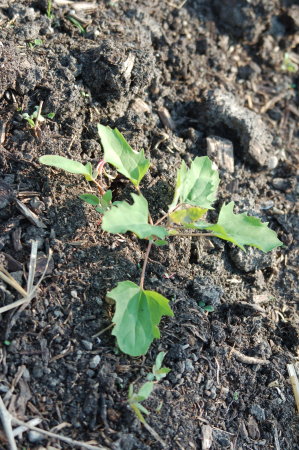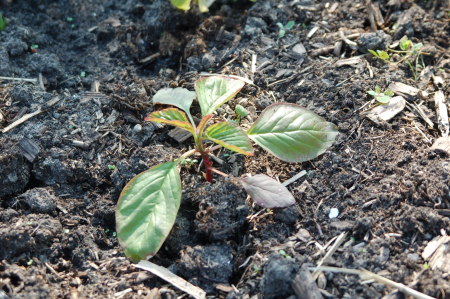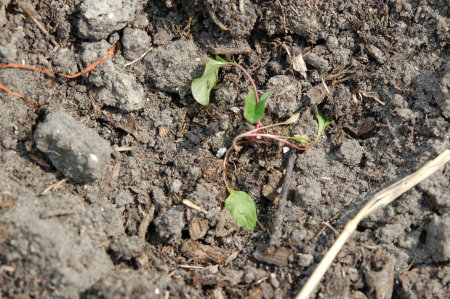The first plant is quinoa, one of the ‘Lost Crops of the Andes’. This is rainbow quinoa, from Real Seeds in the UK. The plant is very similar in appearance, and is related to, lambsquarters a common garden weed. I tried growing this a few years ago, and it didn’t come up. At the same time I noticed the garden was full of lambsquarters, so now I’m beginning to wonder if I didn’t set quinoa free into the garden back then.

In most places in the world, quinoa is easily available in natural food stores, and it’s worth trying if you’ve never had it. It’s sometimes called Incan rice, and it’s a direct replacement for steamed rice in many cases. It has a softer taste than normal rice, while at the same time can taste a little ‘soapy’. The soapiness comes from a water soluble alkaloid that you can remove from home grown quinoa by soaking overnight and rinsing thoroughly. Purchased quinoa has usually been processed to remove this alkaloid and doesn’t need to be rinsed.
The next plant is Amaranth. This too can be a garden weed, commonly called pigweed. Unlike quinoa, I’m not really sure of a nice way to eat this. I understand it can be mixed in with rice or other dishes. I guess I will have to experiment with this. The seeds for this also came from Real Seeds.

Last but not least is Good King Henry, also called Mercury. These seeds came from Søren. I understand you can eat the leaves like a spinach, and in the spring it sends up shoots that can be eaten as a ‘poor man’s asparagus’. The plants seem fragile, and are having a hard time establishing themselves. I understand they prefer partial shade, and they will be growing in the shadow of my Jerusalem artichokes.

I think lots of people are growing this, so if anyone has any tips please let me know.


Lovely pictures and info Patrick. Is the amaranth ‘seed’ or ‘leaf’ variety? I grow the seed variety for my chooks as it has long tassles (green or purple-ish) full of seeds that they love.These are very drought-tolerant and are common here now in public gardens because of their colours and hardiness.They readily self-seed.
The leaf varieties have bigger leaves and are great raw or thrown into a stir fry or rice at the last minute – they are best not cooked much or they just wither up and disappear and you don’t get their flavour. I see several varieites of the leaf form in the Asian markets here and they also can be green or purple-leaved.The stems are lovely too. I have several varieties of seeds which I plan to grow next summer.Our Asian markets are beginning to have lots of new packets of Asian seeds now too, and they are always easy to germinate and fast to grow. I wish I could have some of those Afghan leeks!
Good luck.
Good King Henry looks great. It’s a slow starter, but the plant will increase in size year by year.
Hi Kate: The amaranth is the seed type. I think next time around I should try the leaf type.
If you are still looking for ways to fix the quinoa- there’s a great Quinoa Tabboulleh recipe on allrecipes.com http://allrecipes.com/Recipe/Quinoa-Tabbouleh/Detail.aspx
There are also some nice pilafs. I have also used it in a cornbread and it was fabulous.
Hi Karen,
All these suggestions look great. I like the idea of quinoa pilaf. Thanks for stopping by and leaving a comment!